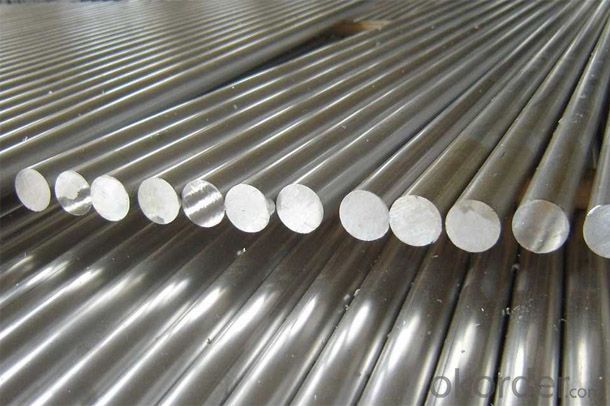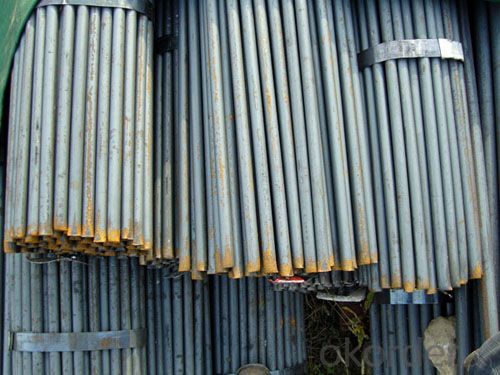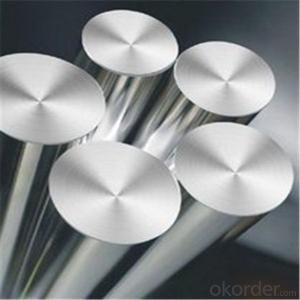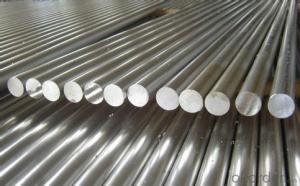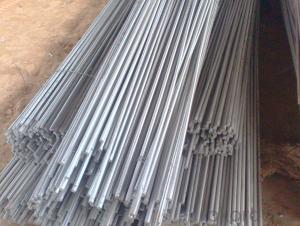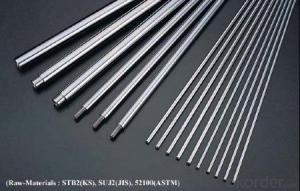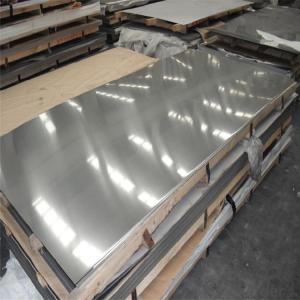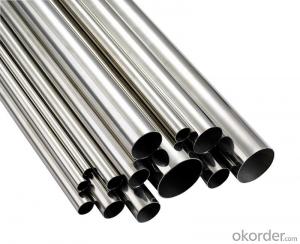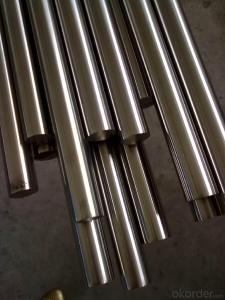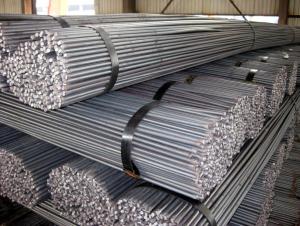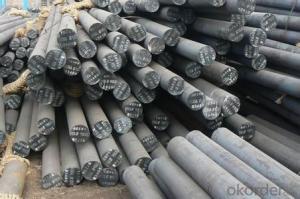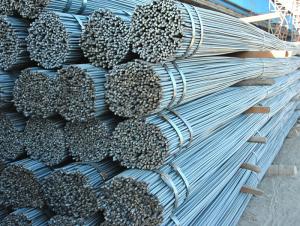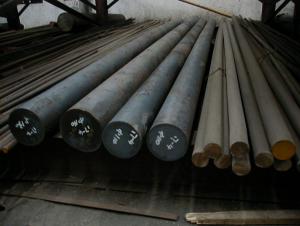Round Bars Popular Sell Cheap Price Stainless Steel 316
- Loading Port:
- Tianjin
- Payment Terms:
- TT or LC
- Min Order Qty:
- 27 m.t.
- Supply Capability:
- 24000 m.t./month
OKorder Service Pledge
OKorder Financial Service
You Might Also Like
Product Description:
OKorder is offering Round Bars Popular Sell Cheap Price Stainless Steel 316 at great prices with worldwide shipping. Our supplier is a world-class manufacturer of steel, with our products utilized the world over. OKorder annually supplies products to European, North American and Asian markets. We provide quotations within 24 hours of receiving an inquiry and guarantee competitive prices.
Product Applications:
Round Bars Popular Sell Cheap Price Stainless Steel 316 are ideal for structural applications and are widely used in the construction of buildings and bridges, and the manufacturing, petrochemical, and transportation industries.
Product Advantages:
OKorder's Round Bars Popular Sell Cheap Price Stainless Steel 316 are durable, strong, and resist corrosion.
Main Product Features:
· Premium quality
· Prompt delivery & seaworthy packing (30 days after receiving deposit)
· Corrosion resistance
· Can be recycled and reused
· Mill test certification
· Professional Service
· Competitive pricing
Product Specifications:
Stainless Steel Pipe
1 Cold roll cold draw pipe&tube
2.Grade: TP304,TP316L
3. Honor:CE/PED,AB
| Series | Top Quility steel Rod |
| Grade | 300 series(304, 304 L,304H,310,310S,316, 316 L,317L,321etc.) |
| Technics | Hot-rolled, Hot-forged, Cold-drawn, Centerless Gringing |
| Surface | Peeled, Bright, Polish |
| Diamete Rang | Peeled bright round bar: 3-400mm |
| Hot-rolled bar: 3-130mm | |
| Hot- forged bar: 130-400mm | |
| Cold-drawn: 3-40mm | |
| Centerless grinding bright round bar: 3-100mm | |
| Dia torlarance:H9-K12 | |
| Length | Radom length, Specified length, Multiple length ( no more than 9m) |
| Usage | These products are widely supplied to areas of machine-made industry, chemical industry, |
| shipping industry, rchitecture, food industry, household products etc | |
| Packaging | Standard export packing, according to customer's requirment |
| Delivery Time | up to the order quantity |
| Certification | CE/PED,ABS, DNV ,GL,LR |
| Application | Pipe and Tubes for petrochemical industry,pharmaceutical industry ,food industry, |
| aviation and aerospace industry,architectural decoration industry |
FAQ:
Q1: Why buy Materials & Equipment from OKorder.com?
A1: All products offered byOKorder.com are carefully selected from China's most reliable manufacturing enterprises. Through its ISO certifications, OKorder.com adheres to the highest standards and a commitment to supply chain safety and customer satisfaction.
Q2: How do we guarantee the quality of our products?
A2: We have established an advanced quality management system which conducts strict quality tests at every step, from raw materials to the final product. At the same time, we provide extensive follow-up service assurances as required.
Q3: How soon can we receive the product after purchase?
A3: Within three days of placing an order, we will begin production. The specific shipping date is dependent upon international and government factors, but is typically 7 to 10 workdays.
Q4: What makes stainless steel stainless?
A4: Stainless steel must contain at least 10.5 % chromium. It is this element that reacts with the oxygen in the air to form a complex chrome-oxide surface layer that is invisible but strong enough to prevent further oxygen from "staining" (rusting) the surface. Higher levels of chromium and the addition of other alloying elements such as nickel and molybdenum enhance this surface layer and improve the corrosion resistance of the stainless material.
Q5: Can stainless steel rust?
A5: Stainless does not "rust" as you think of regular steel rusting with a red oxide on the surface that flakes off. If you see red rust it is probably due to some iron particles that have contaminated the surface of the stainless steel and it is these iron particles that are rusting. Look at the source of the rusting and see if you can remove it from the surface.
Images:

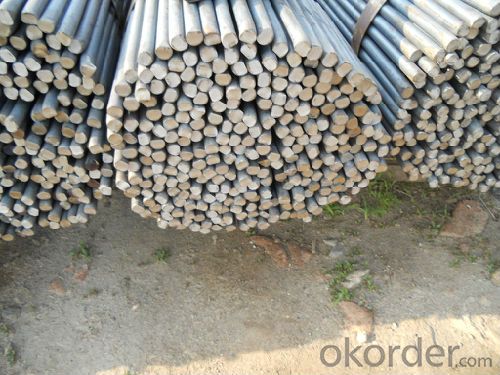
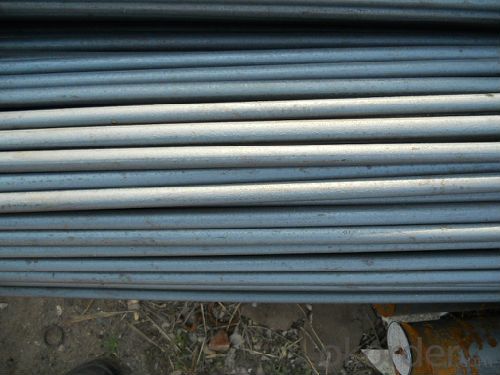
- Q: What are the advantages of using tool steel round bars?
- Tool steel round bars offer numerous benefits. Firstly, they boast outstanding hardness and wear resistance, making them perfect for high-stress applications like manufacturing cutting tools, dies, and molds. The hardness of tool steel also enables precise machining, resulting in accurate and intricate shapes. Secondly, tool steel round bars possess exceptional toughness and impact resistance, enabling them to withstand heavy-duty applications without breaking or cracking. This makes them suitable for demanding industries such as aerospace, automotive, and construction. Moreover, tool steel round bars are renowned for their high temperature resistance, maintaining their hardness and strength even in extreme heat. This is particularly advantageous in applications exposed to high temperatures, like forging or heat treating operations. Another advantage is the dimensional stability of tool steel round bars. They have a low coefficient of thermal expansion, meaning they undergo minimal dimensional changes when subjected to temperature variations. This ensures reliability and predictability in various operating conditions. Furthermore, tool steel round bars can be easily machined and heat treated to achieve specific properties. This versatility allows manufacturers to tailor the material to their specific needs, enhancing the overall performance of the end product. Additionally, tool steel round bars are readily available and cost-effective. They are widely produced and stocked by suppliers, ensuring easy accessibility for various applications. Furthermore, their longevity and resistance to wear and tear contribute to their cost-effectiveness. In conclusion, the advantages of using tool steel round bars include exceptional hardness, toughness, high temperature resistance, dimensional stability, versatility, availability, and cost-effectiveness. These properties make them the preferred choice in industries where durability, precision, and reliability are paramount.
- Q: What is the cost of steel round bars compared to other materials?
- The cost of steel round bars can vary depending on the specific type of steel and current market conditions. Generally, steel round bars tend to be more cost-effective compared to other materials such as aluminum or titanium, especially when considering their strength and durability. However, it is always recommended to compare prices and quality from different suppliers to get a more accurate understanding of the cost differences.
- Q: What are the different surface conditions for steel round bars?
- Steel round bars can come in a variety of surface conditions depending on their intended use and manufacturing process. Some common surface conditions for steel round bars include: 1. Hot Rolled: This is the most common surface condition for steel round bars. It is achieved by heating the steel above its recrystallization temperature and then rolling it through a series of hot rolling mills. This process gives the steel a rough surface with a scale layer that needs to be removed. 2. Cold Drawn: In this surface condition, the steel round bars are pulled through a die at room temperature, which results in a smoother and more precise surface finish. Cold drawn bars have improved dimensional accuracy and surface quality compared to hot rolled bars. 3. Peeled: Steel round bars can also be peeled to remove the scale layer and achieve a smooth surface finish. This process involves rotating the bar against a cutting tool, which results in a clean and bright surface. 4. Ground: Grinding is another method used to achieve a smooth surface finish on steel round bars. It involves removing material from the surface using abrasive belts or wheels, resulting in a precise and consistent surface. 5. Polished: Polishing is a surface treatment that further enhances the appearance and smoothness of steel round bars. It involves using abrasive compounds and buffing wheels to create a reflective and mirror-like finish. 6. Coated: Steel round bars can be coated with various materials to improve their corrosion resistance or enhance their appearance. Common coatings include zinc, chrome, nickel, and various types of paint. The choice of surface condition for steel round bars depends on the specific application and the desired properties. Each surface condition offers different advantages in terms of appearance, corrosion resistance, and mechanical properties.
- Q: Can steel round bars be used in the production of forgings?
- Yes, steel round bars can be used in the production of forgings. Steel round bars are commonly used as raw materials for forging processes. The round bars are heated to a specific temperature and then shaped using various forging techniques such as hammering, pressing, or rolling. The heat and pressure applied during the forging process help to enhance the mechanical properties of the steel, making it stronger and more durable. Steel round bars are ideal for producing forgings as they provide a consistent and uniform shape, ensuring the final product meets the required specifications. Additionally, steel round bars offer versatility in terms of size, grade, and composition, allowing for a wide range of applications in various industries such as automotive, aerospace, and construction.
- Q: What are the different types of steel round bars used in the automotive chassis components?
- There are several different types of steel round bars that are commonly used in automotive chassis components. These types of steel are chosen based on their specific properties and performance requirements for different components of the chassis. 1. Mild Steel Round Bars: Mild steel is the most commonly used type of steel round bar in automotive chassis components. It offers a good balance between strength, durability, and cost-effectiveness. Mild steel round bars are used in various chassis components such as brackets, supports, and reinforcements. 2. High-Strength Low-Alloy (HSLA) Steel Round Bars: HSLA steel round bars are made with a combination of low carbon content and small amounts of alloying elements such as manganese, phosphorus, and chromium. This type of steel provides higher strength and improved formability compared to mild steel. HSLA steel round bars are often used in critical chassis components like control arms, suspension components, and steering linkages. 3. Boron Steel Round Bars: Boron steel round bars are known for their exceptional strength and resistance to deformation. These bars are alloyed with boron, which imparts high hardenability and toughness to the steel. Boron steel round bars are primarily used in safety-critical chassis components like reinforced door beams and crash structures. 4. Stainless Steel Round Bars: Stainless steel round bars are corrosion-resistant and offer excellent strength and durability. While not as commonly used in automotive chassis components, stainless steel round bars may be utilized in certain specialized components that require resistance to rust and corrosion, such as exhaust system components or parts exposed to harsh environmental conditions. 5. Alloy Steel Round Bars: Alloy steel round bars are made by adding various alloying elements such as nickel, chromium, and molybdenum to enhance specific properties like strength, hardness, and wear resistance. These bars are often used in high-performance chassis components like drive shafts, axles, and gears. In summary, the different types of steel round bars used in automotive chassis components include mild steel, high-strength low-alloy steel, boron steel, stainless steel, and alloy steel. The selection of the appropriate type depends on the specific requirements of each component, including strength, durability, formability, and corrosion resistance.
- Q: Can steel round bars be used for hydraulic applications?
- Yes, steel round bars can be used for hydraulic applications. Steel round bars offer high strength and durability, making them suitable for use in hydraulic systems that require robust components to handle high pressures and loads. Additionally, steel round bars can be easily machined and welded to meet specific hydraulic application requirements.
- Q: What are the options for joining steel round bars?
- There are several options for joining steel round bars, depending on the specific requirements and applications. Some common methods include welding, bolting, and adhesives. 1. Welding: Welding is a widely used method for joining steel round bars. It involves melting the ends of the bars and fusing them together using a welding process such as arc welding, MIG welding, or TIG welding. Welding provides a strong and durable joint that can withstand high loads and stresses. 2. Bolting: Bolting involves using bolts, nuts, and washers to join steel round bars. Holes are drilled through the bars, and bolts are inserted through these holes. The nuts are then tightened to secure the bars together. Bolting is a relatively simple and quick method, and it allows for disassembly and reassembly if required. 3. Adhesives: Adhesives can also be used to join steel round bars. High-strength industrial adhesives are applied to the mating surfaces of the bars, which are then pressed together and left to cure. Adhesive bonding can provide a strong and durable joint, particularly in applications where welding or bolting may not be feasible or desired. 4. Mechanical couplings: Mechanical couplings are specifically designed for joining steel round bars. These couplings typically consist of two separate components that are fitted over the ends of the bars and tightened together using screws, clamps, or other mechanical means. Mechanical couplings provide a reliable and secure joint without the need for welding or drilling. 5. Cold forming: In some cases, steel round bars can be joined through cold forming techniques such as swaging or crimping. These methods involve mechanically deforming the ends of the bars to create a tight and secure joint. Cold forming is often used in applications where welding or other traditional methods are not suitable. It is important to consider the specific requirements, load-bearing capacities, and environmental conditions when selecting the appropriate method for joining steel round bars. Consulting with a professional engineer or welder can help determine the best option based on the specific application and desired outcome.
- Q: What is the difference between a rough turned and a seamless steel round bar?
- A rough turned steel round bar refers to a metal bar that has undergone a preliminary turning process, where excess material is removed to achieve a rougher surface finish. This process helps to create a more uniform diameter and removes any surface imperfections or irregularities. Rough turned bars are commonly used in applications where a smooth surface finish is not a requirement, such as in manufacturing machinery or agricultural equipment. On the other hand, a seamless steel round bar is a solid metal bar that is formed without any welding or seams. It is manufactured through a process called piercing, where a solid billet is heated and then pierced with a mandrel to create a hollow tube. The tube is then elongated and reduced in diameter through a series of rolling and drawing processes until it reaches the desired dimensions. Seamless round bars are known for their superior strength and resistance to corrosion, making them suitable for applications where a high level of performance is required, such as in the oil and gas industry or automotive manufacturing. In summary, the main difference between a rough turned and a seamless steel round bar lies in their manufacturing processes and surface finishes. Rough turned bars are created by removing excess material to achieve a rougher surface finish, while seamless bars are formed without any welding or seams, resulting in a smooth and continuous surface.
- Q: Can steel round bars be used for making heat exchangers?
- Yes, steel round bars can be used for making heat exchangers. Steel is a commonly used material for heat exchangers due to its good thermal conductivity, strength, and resistance to corrosion. Round bars can be machined and formed into the desired shape for the heat exchanger, providing structural integrity and efficient heat transfer.
- Q: How do steel round bars perform under impact or shock loading?
- Steel round bars are known for their exceptional performance under impact or shock loading. Due to their high strength and toughness, steel round bars can withstand sudden forces and resist deformation or failure. The inherent properties of steel, such as its hardness and ductility, contribute to its ability to absorb energy and distribute it throughout the material, minimizing the impact on the structure. When subjected to impact or shock loading, steel round bars undergo plastic deformation, which allows them to absorb the applied energy without breaking. The ability to absorb energy is crucial in various applications, such as construction, automotive, and machinery industries, where components are often subjected to dynamic loads. Additionally, steel's excellent fatigue resistance further enhances its performance under impact or shock loading. Even when subjected to repeated impacts, steel round bars can withstand the cyclic loading without undergoing significant degradation in their mechanical properties. Moreover, steel round bars can be further enhanced through various heat treatment processes, such as quenching and tempering, to improve their resistance to impact or shock loading. These processes help to refine the microstructure of the steel, resulting in increased strength, toughness, and hardness. In conclusion, steel round bars have a remarkable performance under impact or shock loading. Their high strength, toughness, and ability to absorb energy make them reliable and widely used in applications where sudden forces or dynamic loads are expected.
Send your message to us
Round Bars Popular Sell Cheap Price Stainless Steel 316
- Loading Port:
- Tianjin
- Payment Terms:
- TT or LC
- Min Order Qty:
- 27 m.t.
- Supply Capability:
- 24000 m.t./month
OKorder Service Pledge
OKorder Financial Service
Similar products
Hot products
Hot Searches
Related keywords



